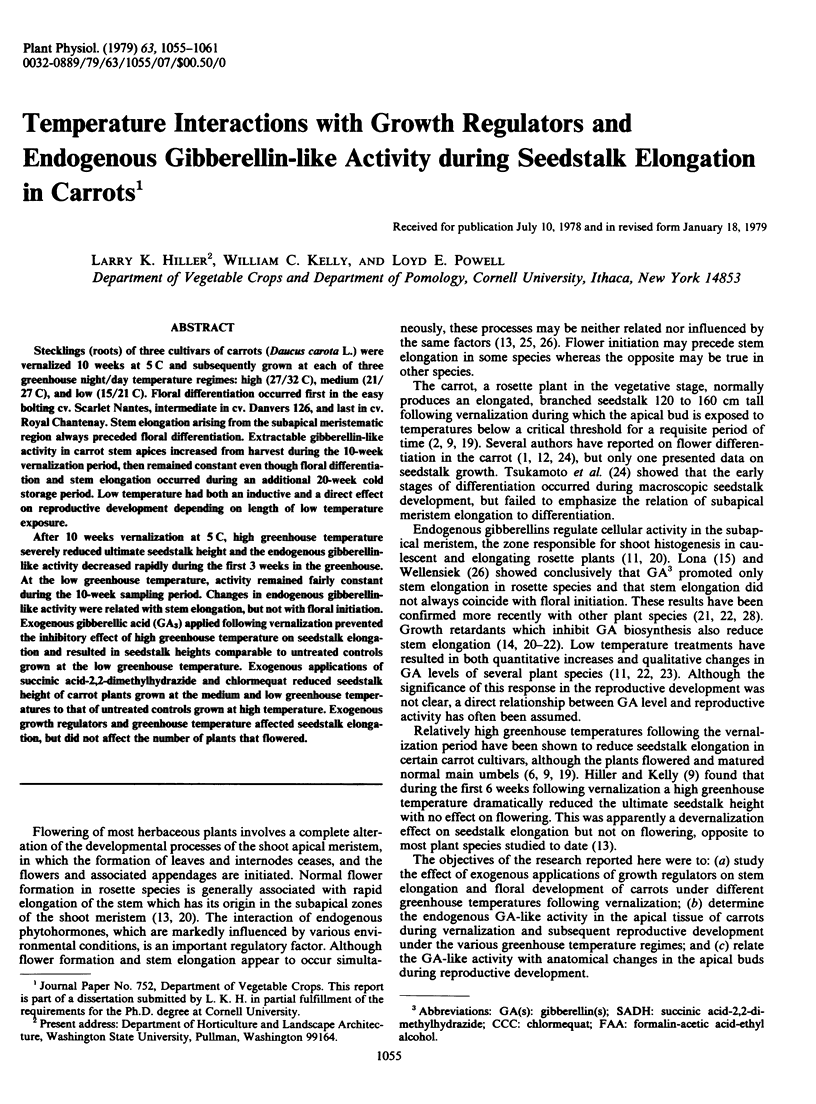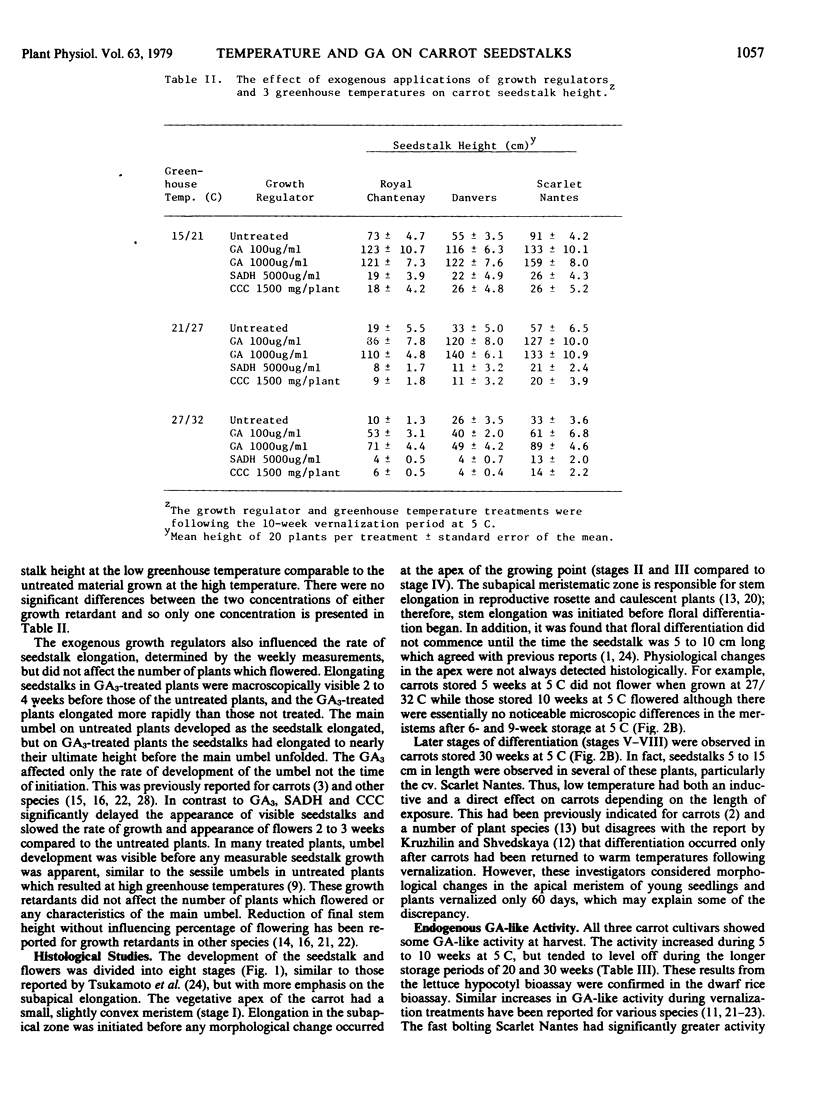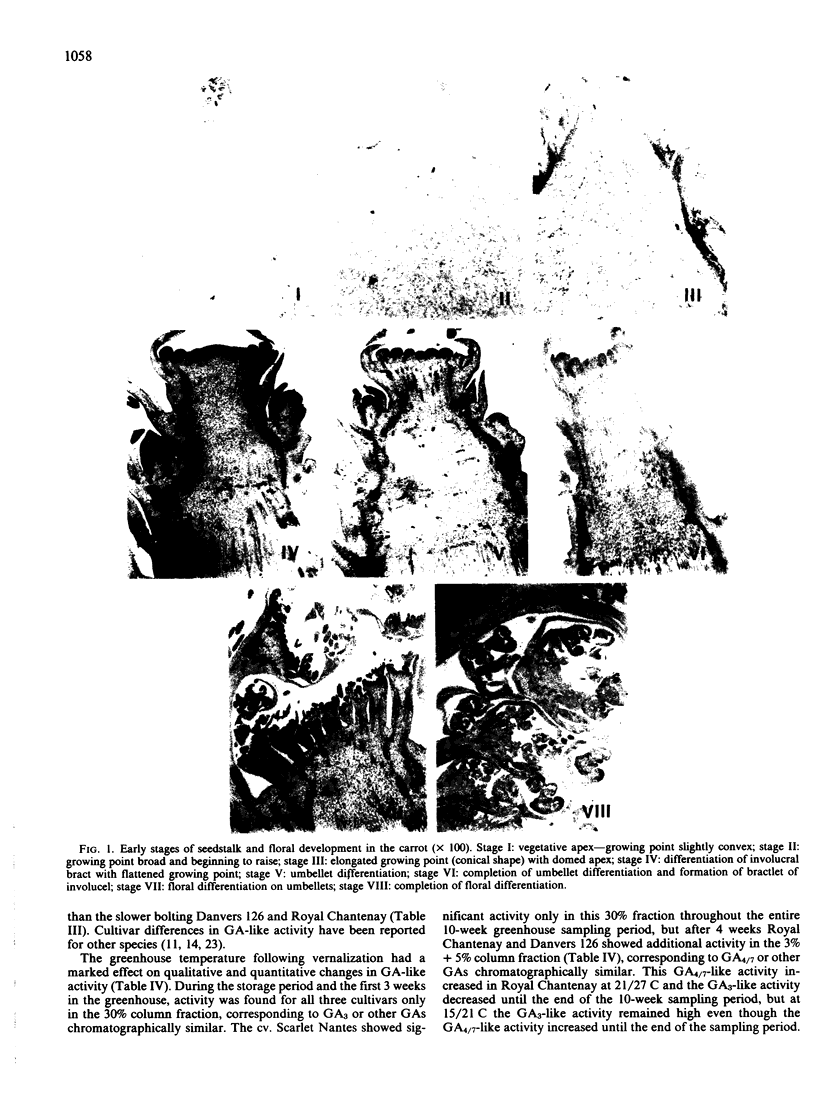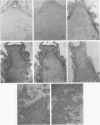Abstract
Stecklings (roots) of three cultivars of carrots (Daucus carota L.) were vernalized 10 weeks at 5 C and subsequently grown at each of three greenhouse night/day temperature regimes: high (27/32 C), medium (21/27 C), and low (15/21 C). Floral differentiation occurred first in the easy bolting cv. Scarlet Nantes, intermediate in cv. Danvers 126, and last in cv. Royal Chantenay. Stem elongation arising from the subapical meristematic region always preceded floral differentiation. Extractable gibberellin-like activity in carrot stem apices increased from harvest during the 10-week vernalization period, then remained constant even though floral differentiation and stem elongation occurred during an additional 20-week cold storage period. Low temperature had both an inductive and a direct effect on reproductive development depending on length of low temperature exposure.
After 10 weeks vernalization at 5 C, high greenhouse temperature severely reduced ultimate seedstalk height and the endogenous gibberellinlike activity decreased rapidly during the first 3 weeks in the greenhouse. At the low greenhouse temperature, activity remained fairly constant during the 10-week sampling period. Changes in endogenous gibberellinlike activity were related with stem elongation, but not with floral initiation. Exogenous gibberellic acid (GA3) applied following vernalization prevented the inhibitory effect of high greenhouse temperature on seedstalk elongation and resulted in seedstalk heights comparable to untreated controls grown at the low greenhouse temperature. Exogenous applications of succinic acid-2,2-dimethylhydrazide and chlormequat reduced seedstalk height of carrot plants grown at the medium and low greenhouse temperatures to that of untreated controls grown at high temperature. Exogenous growth regulators and greenhouse temperature affected seedstalk elongation, but did not affect the number of plants that flowered.
Full text
PDF






Images in this article
Selected References
These references are in PubMed. This may not be the complete list of references from this article.
- Suge H., Rappaport L. Role of gibberellins in stem elongation and flowering in radish. Plant Physiol. 1968 Aug;43(8):1208–1214. doi: 10.1104/pp.43.8.1208. [DOI] [PMC free article] [PubMed] [Google Scholar]



